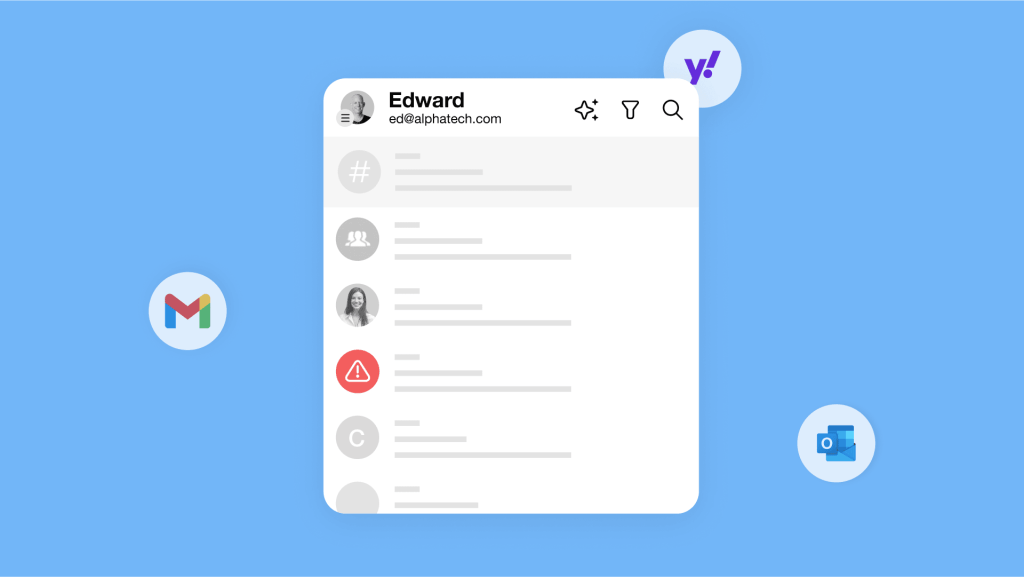How to spot a scam email

Gone are the days of obvious typos and broken English from Nigerian princes. Today’s scammers copy legitimate brands perfectly, from your bank’s logo to your colleague’s writing style. They know exactly which buttons to push to make you click without thinking.
Scams cost billions in losses, compromise accounts, and leave many people feeling foolish afterward.
This guide will teach you how to spot these scams before they bite you.
Email scams are more common than you think
The numbers are staggering:
- 75% of cyberattacks start with a deceptive email.
- Nearly 3.4 billion malicious emails are sent daily.
- Business email scams have cost organizations over $50 billion since 2013.
AI has made everything worse. Scammers now use ChatGPT and similar tools to write convincing emails, create perfect fake websites, and even create QR‑code‑based phishing campaigns that look legitimate. The broken English and obvious fakes are mostly gone.
What scam emails actually cost you
Money
Obviously. Scammers drain bank accounts, make fraudulent purchases, or trick businesses into wiring cash to fake vendors. Once your email is compromised, they often dig deeper into your accounts and steal more.
Your reputation
If you’re a business, especially if you’re managing customer communications, then you’re a prime target. And, clients lose trust when you get hacked. Partners hesitate to work with you.
Many organizations implement mobile device management (MDM) solutions to enforce security policies across employee devices. For a dropshipping business or really any ecommerce company, this can be devastating since customer trust is central to long-term success.
For individuals, identity theft can mess up your credit for years.
Peace of mind
Getting scammed feels awful. Most people blame themselves, even when they shouldn’t. The anxiety sticks around long after the money’s gone.
Time
Cleaning up identity theft takes hundreds of hours. Calling banks, filing reports, fixing your credit – it’s exhausting.
5 signs of a scam email
-
Fake sender addresses
Look closely at the email address. Scammers use tricks like “arnazon.com” instead of “amazon.com” or swap letters with numbers. If something looks off, it probably is.
To be sure, you can use an email verification tool to check if the sender’s address is real and active. It’s a quick way to spot suspicious or fake emails before engaging.
-
Generic greetings
“Dear Customer” or “Hello User” screams mass email. Real companies use your actual name because they have your account info. A real cold outreach will usually reference your name, company, or a detail relevant to your business.
-
Random attachments or suspicious links.
Got an invoice for something you didn’t buy? A link to “verify your account” from a service you don’t use? Don’t click. When in doubt, go directly to the company’s website instead.
-
Urgent threats
“Your account will be closed in 24 hours!” “Immediate action required!” Scammers love creating panic. Legitimate companies don’t threaten you – they send reminders.
-
Sloppy branding
Blurry logos, weird fonts, or writing that doesn’t sound like the real company. Big brands obsess over consistency. If it looks amateur, it’s probably fake. Check for obvious signs like an email signature with the company logo.
4 ways to protect yourself from email scams
-
Slow down
Scammers count on you clicking fast. Take a breath. Read the sender address. If something feels urgent or weird, call or text the person directly to verify. At work, make it okay for people to double-check suspicious requests without feeling stupid.
-
Know what's already out there
Your personal info is probably floating around from old data breaches. Use a digital footprint checker to see what scammers might already know about you, then change passwords on exposed accounts.
Digital footprint checkers (like this free one from Aura) scan across public and hidden spaces on the internet to reveal whether your information is already exposed.
-
Watch your credit
Set up credit monitoring so you get alerts when someone tries to open accounts in your name. Catching fraud early saves massive headaches later. Credit monitoring services track your credit reports for new activity, such as loan applications or account openings.
-
Consider identity theft insurance
Even careful people get scammed. Identity theft insurance can cover stolen money and help with the cleanup process, which takes forever to do alone.
What laws protect you from email scams?
Governments are cracking down on companies that don’t protect your data properly.
GDPR (Europe)
Companies must secure your personal info or face massive fines. Poor email security can cost them millions.
CCPA (California)
Gives you the right to know what data companies collect and requires them to delete it.
FTC (US)
Enforces regulations against businesses that fail to take reasonable steps to prevent scams. Their message is clear: protect your customers or get sued.
Financial regulations
Banks and payment companies face the strictest rules since they handle money. They’re required to have strong email security and train employees to spot scams.
These regulations convey a consistent message: organizations must invest in systems and training that mitigate the risk of scam emails. This can include starting a webinar, regular workshops, or online courses to educate employees on identifying phishing attempts and handling suspicious messages.
Stay alert, keep your software updated, and remember – legitimate companies don’t threaten to close your account in the next two hours. When in doubt, go directly to their website or give them a call.
Most scams only work if you’re rushing. Slow down, and you’ll be fine.
Author: Irina Maltseva

Irina Maltseva is a Growth Lead at Aura, a Founder at ONSAAS, and an SEO Advisor. For the last ten years, she has been helping SaaS companies to grow their revenue with inbound marketing.




